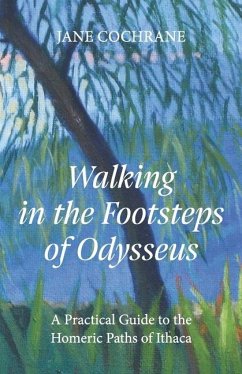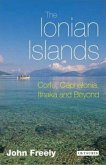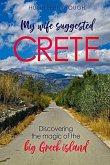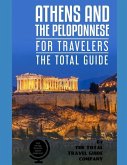This book has been updated in 2024. It leads the visitor on a self-guided tour of Homer's Ithaca. It follows ancient footpaths to landmarks traditionally identified by Homerists, philologists and archaeologists with the descriptions made by Homer in his epic poem The Odyssey. Visitors can see for themselves the landscape and topography of Ithaca and make their own comparisons with the ancient words of Homer. The guide follows the footsteps of the island's ancient hero Odysseus on his return to his beloved home island. The paths lead to the site, at Agios Athanasios / School of Homer, most widely believed by scholars to be that of his palace. There the finds made between 1994 and 2010 by the archaeologists Litsa and Thanasis Papadopoulos from the University of Ioannina in Central Greece are described. Homer's epic poems The Iliad and The Odyssey are among the oldest extant works of Western literature, on which they have had a profound influence. The Iliad tells the story of the ninth year of the Trojan War; The Odyssey tells how King Odysseus, a hero of that war, makes his eventful journey back to his home island of Ithaca. By the time Odysseus arrived back on Ithacan soil, twenty years had passed since he set out to fight in the Trojan War. He left behind his young wife, Penelope, and their baby son, Telemachus. Back in Ithaca, as the years went by, Penelope was besieged by suitors who assumed that Odysseus was dead and wanted to claim his kingdom. The poet Homer describes Odysseus' reunion, first with his son, Telemachus, a baby when he left and now a fine young man, and then with his loyal wife, Penelope. He tells, in gruesome detail, how he and a small group of colleagues kill all 108 of Penelope's suitors. Twelve out of 24 books of The Odyssey take place after Odysseus' arrival back in Ithaca. This famous story was passed down through the generations for over 3,000 years. Yet, even after all these years, and its many different translations, it is hard not to conclude that, to make such precise descriptions, Homer must have visited Ithaca to see its landscape with his own eyes. There are a few objects, coins and tripods, on public display on Ithaca, and some that can be seen elsewhere, that firmly link the hero Odysseus with this island and no other. These are also described in this guide along with a brief background history of their discovery. Many and varied theories have been recently put forward that the location of Homeric Ithaca may be in a different place to the modern Greek island of Ithaca. These are summarised along with the main arguments used in their support. The main reasons why these do not hold water are then briefly explained. After taking the walks described in this book the intelligent visitor may be convinced that the kingdom of Odysseus was centred on this island, and that Homeric and modern Ithaca are one and the same.
Hinweis: Dieser Artikel kann nur an eine deutsche Lieferadresse ausgeliefert werden.
Hinweis: Dieser Artikel kann nur an eine deutsche Lieferadresse ausgeliefert werden.








